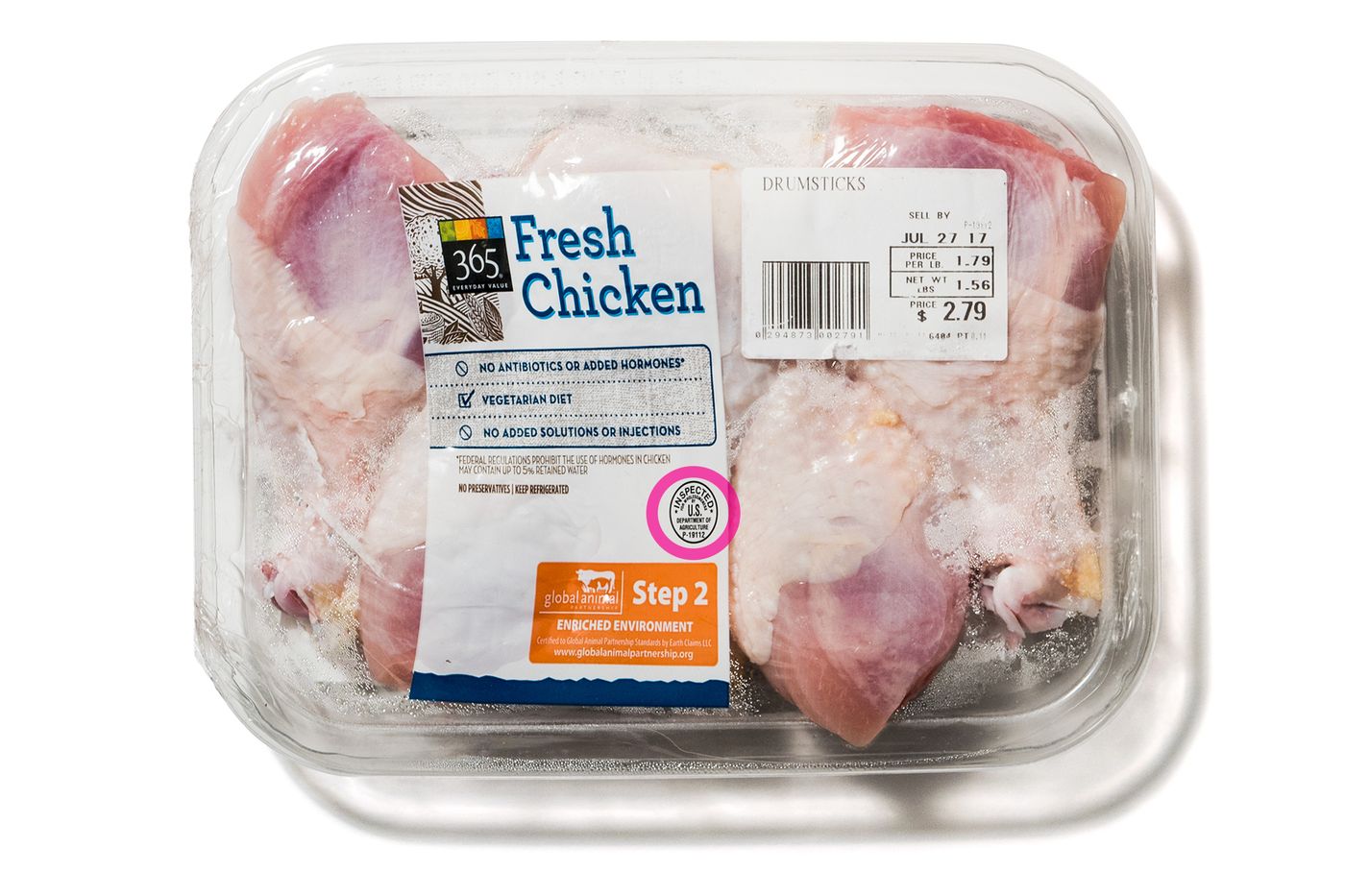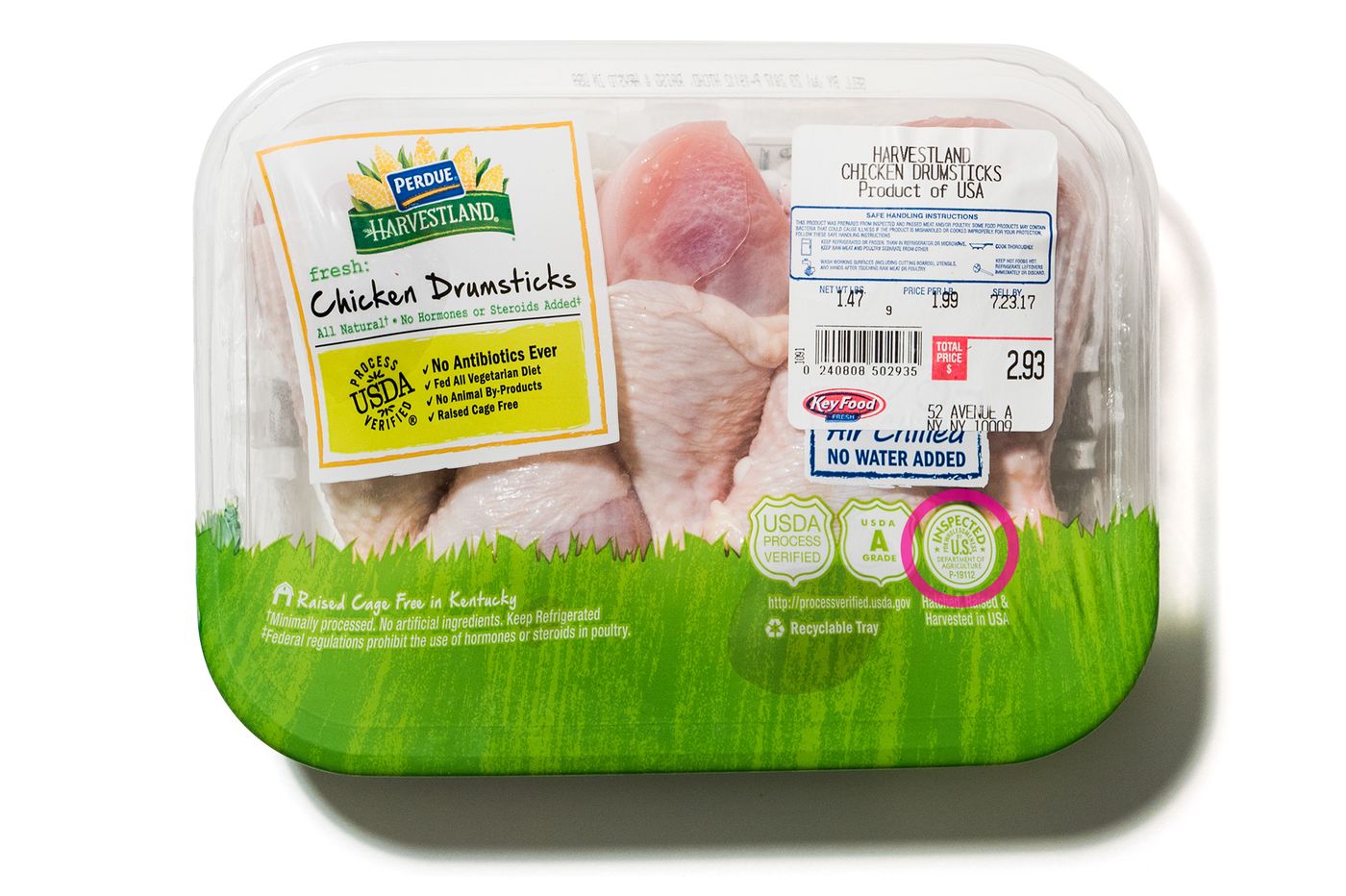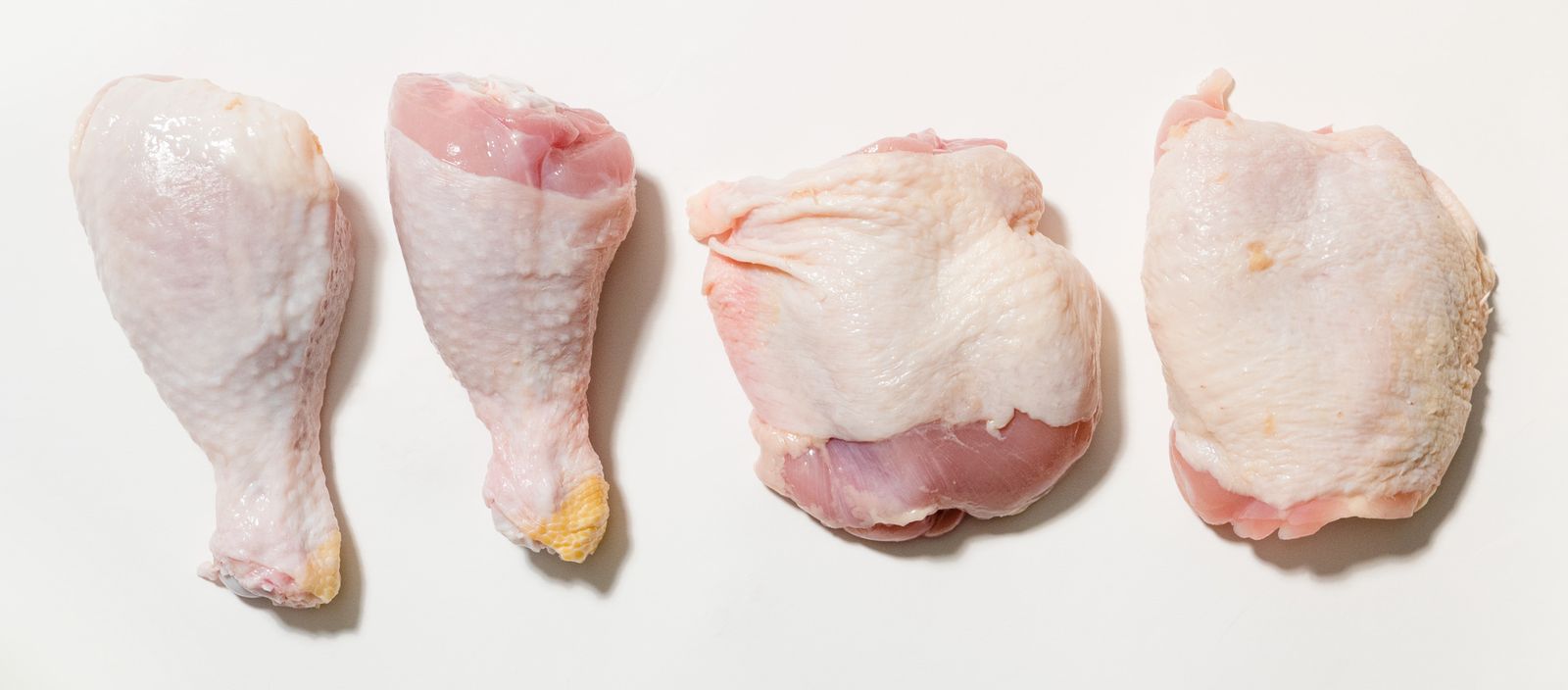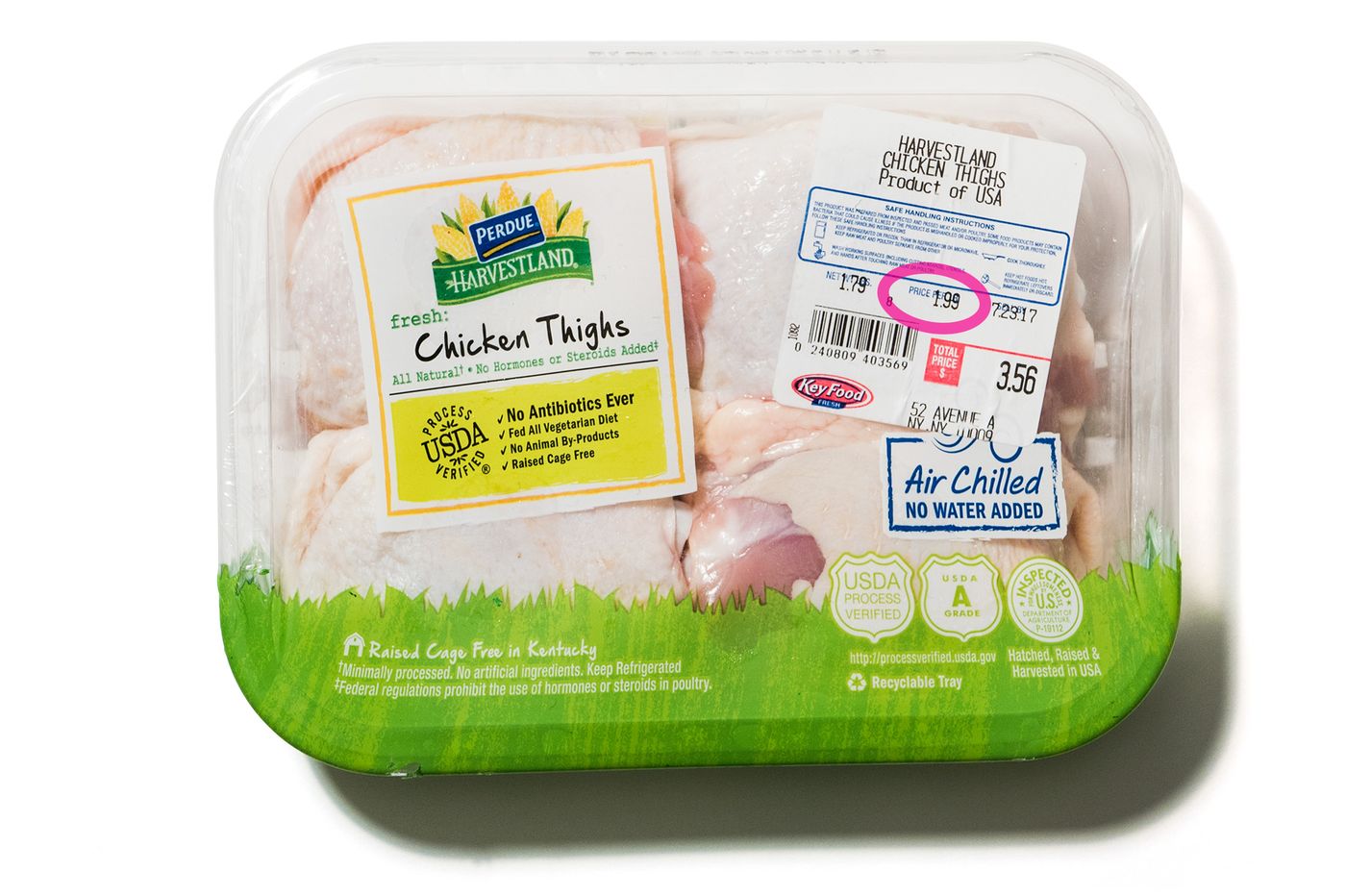Bloomberg: That Chicken From Whole Foods Isn’t So Special Anymore
By Deena Shanker and Polly Mosendz | August 14, 2017, 3:00 AM MDT
Big poultry and meat producers have absorbed many of the organic grocer’s practices—and become its suppliers.
Whole Foods Market Inc. doesn’t just sell chickens. It sells shoppers on the idea of chickens raised and treated better than prevailing standards: no antibiotics, no hormones, no cages. Not the sort of chicken you can get anywhere.
But thanks in no small part to a food-quality revolution that Whole Foods helped cultivate over the past decade, standards for much of the poultry sold at American supermarkets are shifting. The gulf has narrowed—and sometimes has even closed—between what’s sold at Whole Foods and what’s produced by industrial food giants such as Perdue Farms Inc. and sold at lower-cost supermarkets.
Now that Amazon.com Inc. has moved to acquire Whole Foods for $13.7 billion, it remains to be seen what the online-shopping giant will do with the grocery chain that arguably did more than any business to bring the fussy foodie focus on provenance into the mainstream. The more widespread availability of products meeting Whole Foods standards can even be seen as part of what made the company vulnerable to a takeover bid.
The biggest difference between the store-brand chickens at Whole Foods and what’s for sale at another supermarket is, in many cases, the sticker price itself.
A shopper on a recent visit could pay $2.49 per pound for antibiotic-free thighs with a Whole Foods label touting “no added solutions or injections.” Perdue’s Harvestland-branded poultry—no antibiotics, air-chilled—cost just $1.99 per pound at an unremarkable Key Food supermarket just a few blocks away. The similarities don’t stop there: In this case, the chicken under the 365 Everyday Value store-brand label at Whole Foods was raised by a Perdue farmer and slaughtered in the same Perdue plant as its Harvestland cousin, although a shopper likely wouldn’t be aware of that fact.
Not all 365-branded chicken comes from Perdue, and aside from an establishment number printed on the package, there is no way to determine where a product originated. Yet the price disparity for poultry of nearly indistinguishable origins can be pronounced. A whole bird under the 365 store brand at the same Whole Foods: $4.09 per pound. At Key Food, the Perdue Harvestland whole chicken: $1.99 per pound. (The quirks of grocery pricing can lead to unexpected results: Whole Foods store-brand drumsticks produced by Perdue rang up at 20 cents less per pound than Perdue’s Harvestland version.)
“What used to be more unique” to natural food retailers “has now become really par for the course, certainly among your larger chains and your progressive grocers,” says David Sprinkle, researcher director at Packaged Facts, a market-research firm. “When other chains, including bigger chains, started doing natural and organic, well, then suddenly Whole Foods was competing with Kroger, Wegmans, Costco.”
Several big poultry producers have acquired or formed partnerships with brands carried by Whole Foods; in some cases these companies have developed lines that accord with the practices used by Whole Foods. Perdue, for instance, acquired the no-antibiotics Coleman Natural Foods in 2011 and has since converted 95 percent of its poultry operations to antibiotic-free production. Poultry sold to Whole Foods is segregated from the rest of its lines.
Other standards that Whole Foods helped champion are becoming, well, standard. A practice such as air-chilling the chickens after slaughter—a step favored by chefs over a water bath—is used on Perdue poultry sold at Whole Foods and elsewhere. Other practices have been longtime standards. The use of synthetic hormones is not approved for U.S. poultry production, meaning that all chicken sold in supermarkets eligible for the hormone-free designation and broiler chickens are almost never raised in cages.
The same dynamic has also played out with beef. Open Prairie Natural Angus, a brand sold at Whole Foods, is produced by Tyson Foods Inc. from cattle raised without antibiotics or added hormones. Meyer Natural Angus, a brand sold at Whole Foods in accordance with the supermarket chain’s meat-sourcing standards, is processed in a plant owned by Cargill. Both of these brands can be found in meat departments at lower-priced retailers such as Target and Walmart-owned Jet.com.
“If you asked me 10 years ago, will you ever have a lot of Perdue chicken in your stores, I would have said, ‘No, probably not.’”
After the announcement of Amazon’s deal to buy Whole Foods, the grocery chain said in a letter to its customers that it was still going to “deliver the highest quality, delicious natural and organic products that you’ve come to love and trust.” A few days later, Whole Foods Chief Executive John Mackey said he had been assured that Amazon wouldn’t introduce a substandard brand with his store’s name on it.
“We will want Whole Foods to keep doing what it does best, including working with small farms and producers to bring the best natural and organic foods to customers,” an Amazon spokesperson told Bloomberg via email. But an Amazon-owned Whole Foods would almost certainly expand in the already cutthroat U.S. grocery business, creating new urgency for the supermarket chain to source meat and poultry, and industrial-scale producers can handle that output more easily than the small farmers who helped build the Whole Foods image.

The establishment number on the USDA inspection label shows where the bird was processed.
Photographer: Marisa Gertz/Bloomberg
At the moment, however, what sets Whole Foods apart—besides higher prices—is the way it communicates to shoppers about its animal welfare standards. Signs and labels in the meat department describe a five-step rating developed with the nonprofit Global Animal Partnership (GAP). To qualify at Step 1, the baseline for inclusion in a Whole Foods meat department, means any product must prohibit antibiotics and hormones and follow a “no cages, no crates, no crowding” credo. Farmers and ranchers raising the animals are also expected to be audited for compliance every 15 months.
The 365-branded poultry at Whole Foods is often rated Step 2, since GAP doesn’t certify chickens at a lower level. Some of the requirements to earn that designation represent real improvements over industry standards—and some do not.
A Step 2 barn, for instance, must have one type of “enrichment” for every thousand square feet. What exactly is a chicken enrichment? “Something that encourages expression of natural behavior” such as “foraging, playing, or exercise,” says Anne Malleau, GAP’s executive director and global meat coordinator at Whole Foods. A farmer who provided a sufficient number of ramps for his chickens to climb would qualify. Even though many shoppers might envision their Whole Foods chickens roaming outdoors, such a perk isn’t required until Step 3.
Many shoppers are in the dark about what these claims really mean, even as Whole Foods adorns its meat department with information about its food certification. Research conducted by Packaged Facts this year found that about 21 percent of shoppers at natural-food supermarkets akin to Whole Foods either didn’t know or had only a general idea of what it meant to advertise a product as “hormone/steroid free.”

Perdue Harvestland drumsticks share the same establishment number as some Whole Foods 365 Everyday Value drumsticks.
Photographer: Marisa Gertz/Bloomberg
Part of this confusion might stem from the fact that the standards promoted by GAP and Whole Foods are now becoming more widely embraced in the U.S. In June 2016, Perdue announced new animal welfare standards that included adding windows to 200 barns and a study of chicken-enrichment activities. So far, a Perdue spokesman said in an email, enrichments such as perches and hay bales are in 13.5 percent of the company’s barns. Last month the company committed to raising enough GAP-certified chickens to meet customer demand.
And no matter if a bird’s destiny is underneath a Whole Foods 365 label or Perdue’s own Harvestland brand, in many cases the slaughtering and processing happens in the same facility, which can be identified by the establishment number printed on the packaging. That means the same methods used to produce GAP-approved poultry for Whole Foods now extend well beyond what’s sold at Whole Foods.
At a Whole Foods with a meat counter, there will be a range of beef options behind the case clearly marked as local or grass-fed. As with poultry, the products are all GAP-certified and follow the five-step rating system that requires a minimum of space per animal, pasture access, and a prohibition on branding. And, much like the poultry, customers at the meat counter would be unlikely to know that brand-free beef under the glass may come from two companies whose products are available through lower-cost vendors: Meyer Natural Angus and Open Prairie.
Both producers adhere to the required standards, even if shoppers are not aware of the connection to major beef companies. Meyer Natural Angus is processed in a Cargill plant in Colorado; Open Prairie is a Tyson brand. It’s more difficult to reliably compare beef prices at Whole Foods and other grocers because there are so many different cuts and availability can vary by location.
Meyer operates by sourcing GAP-certified animals and having them processed at a Cargill facility for a fee, then shipping to Whole Foods distribution centers. The company’s use of Cargill facilities is not abnormal, according to industry experts, and segregation practices are strictly monitored by representatives of both companies and the U.S. Department of Agriculture.
“Because of the consolidation of the industry,” says Gregory Bloom, executive director of the Colorado Beef Council, “it’s hard not to go through the bigger processors.”
Meyer uses the facility one a day a week, says Warren Mirtsching, senior vice president for food safety at Meyer Natural Foods, and processes a minimum of about 800 heads of cattle in that time. The process remains unchanged even when it’s not GAP-certified cattle getting slaughtered. “Lines are running at the same speed,” Mirtsching says. “Same equipment, same employees.”
Whole Foods points to the extra level of audits that are guaranteed with any product purchased at its stores, rigorous enough that industry insiders sometimes complain that working with Whole Foods means jumping through extra hoops. “I’m really proud of the process to become a Whole Foods market supplier,” says Theo Weening, global meat coordinator and buyer at Whole Foods.
About 21 percent of shoppers at natural-food supermarkets like Whole Foods don’t really know what “hormone/steroid free” means
There’s something else Whole Foods believes it offers: peace of mind. Sure, shoppers at Whole Foods can select—and pay extra for—a pasture-raised chicken or grass-fed steak from a local rancher. But even the least-expensive option will meet a basic promise of quality and transparency. “All products meet the same minimum standards. You don’t have to read the labels,” Weening says. In other stores, however, “the customer really has to search.”
Perhaps this is what resonates with the core customers at Whole Foods. Regardless of minor differences in provenance for some meat and poultry, the organic-food grocer has built its brand on the promise of healthful food and higher-quality products. The company has the ability to “leverage quite a bit of consumer trust,” says Billy Roberts, a senior food and drink analyst at Mintel, a market intelligence agency.
Research conducted by Mintel found that the second-most purchased category of items from natural grocers is fresh meat, including poultry and seafood. “There is a trust halo there,” says Diana Smith, the associate director of retail and apparel at Mintel. “Consumers are going in and shopping for these items because they do trust them.”
Still, other retailers now offer very similar products, sometimes at a much lower price. This may, at least in part, explain why Whole Foods keeps adding rules, such as its March 2016 requirement that suppliers switch chicken breeds over the next eight years to those that grow more slowly and have fewer health problems.
For companies like Perdue, Cargill, and Tyson, diversifying into the higher welfare category makes business sense. The big meat and poultry companies are devoting much heavier portions of production to these generally more expensive products as consumer demand rises and large retail and restaurant customers, including McDonald’s, ask for them, says Dewey Warner, a food and nutrition researcher at Euromonitor International. Plus, he notes, products such as antibiotic-free or organic chicken “command higher prices” at a time when record meat and poultry supplies in the U.S. are curbing commodity prices.
Weening, the Whole Foods meat buyer, recognizes that as his company has demanded better products, it’s often the bigger, more widely available companies that have risen to supply them. “If you asked me 10 years ago, will you ever have a lot of Perdue chicken in your stores, I would have said, ‘No, probably not,’ ” he says. But, he adds, this only furthers the mission: “First it starts with Whole Foods, and then it changes the way animals are raised across the world.”
Whole Foods seems to be succeeding by that measure. While that might mean the company is fostering the growth of its own competition, one group is certain to benefit from more widely available products that meet higher standards: meat-eating grocery shoppers.
—With assistance by Shruti Singh.


